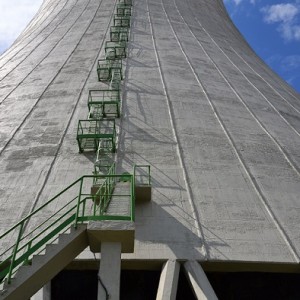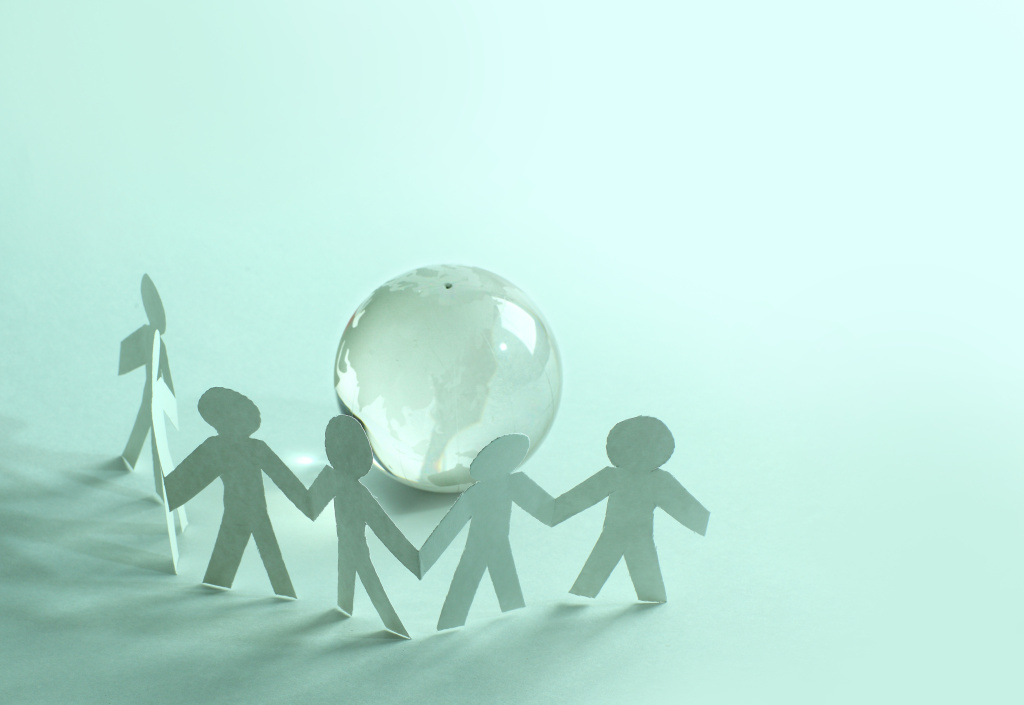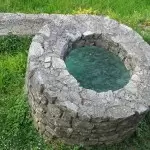
Most countries in the western world have harnessed the power of nuclear technology for decades. Since the development of the atomic bomb, the human race has found other uses for this technology that still divides people - it provides power for our homes and has medicinal uses. Nuclear physics is a well-established division of the “hard science” of physics, and every major college and university with a physics department offers the subject. In order to get onto a nuclear physics program, secondary education qualifications must demonstrate strong aptitude, not only in physics, but also in mathematics. As one of the more sought after undergraduate degrees, graduates should not have too much trouble getting entry level jobs. However, a career in nuclear medicine will certainly require a Master's qualification, if not a doctorate.
Whether we like it or not, nuclear power benefits us all. While we burn fossil fuels, use hydroelectric wind power, harness tidal and solar power , and look for other ways to meet our energy needs - we simply have to use nuclear energy as one method in achieving that. Modern power stations generate more energy and are safer than their older counterparts. Whether anything else will replace it any time soon to provide just as much of our energy needs, is a hotly disputed point; nuclear power in general continues to divide green activists, political ideologies and even scientists themselves.
There is a lot of fog to cut through and it can be difficult to find impartial information outside of academic sources.
Brief History of Nuclear Power
Research into the possibility of harnessing nuclear power began in the 20th century when it was discovered between the end of the 19th century and the middle of the 20th century that radioactive elements released an enormous amount of energy (4). It wasn't long after development of atomic weapons that governments saw other benefits and potential of nuclear power. Though dwindling fossil fuels were not an issue in the 1950's when the first commercial nuclear power stations opened (2) around the world, it was clear there was a potential for efficient generation of cleaner power that could easily accommodate the growing demands of the future. Just 1kg of uranium, for example, produces the same energy as 2000 metric tonnes of coal (1). Not only that, but that release of additional neutrons could release even greater amounts of energy (4). World War II ended and so began the nuclear race alongside the Cold War - the two issues tied inextricably to developing weapons with greater power, and to provide even greater energy needs in east and west.
But it was Soviet Russia that saw the first delivery of electricity supplied by nuclear generation (3, p1) though the world's first chain reaction was observed at the culmination of The Manhattan Project (4). By the end of the 1950's, the technology was used by eastern and western powers and most First World countries had at least one nuclear power plant before 1960 (3, p1). The decade saw massive expansion of commercial nuclear energy (4); right across North America (3, p2), Europe and the USSR (4) the world fell in love with this powerful, clean source of energy. However, it came up against a world of a growing environmental movement and the 1970's and 1980's saw a slowdown in building of reactors and a general negative perception of their use (3, p3-5). In the USA, pressure on government to pass environmental legislation to protect peoples' health and the natural resources led to the creation of the EPA (5, p2-3). Other countries followed suit, such as the UK where the government similarly created the Department of the Environment. Due mostly to environmental awareness, there was a 0% growth in nuclear power capacity - any that opened merely replaced older, less efficient reactors closing (3) (the new units also had greater capacities). There would be environmentalism in the USSR, but not until the terrible accident that took place in Chernobyl in 1986 (3, p4).
The early part of the 21st century has already seen a growth of interest in the use and revival of nuclear power. In the EU and in North America largely due to instability of fossil fuel availability, that the world may have reached peak oil, high prices and a need to increase power production while reducing greenhouse gas emissions (4) (and also that older plants need to be updated), means we are once again faced with the possibility of a nuclear future. Enthusiasts say that the third generation nuclear stations are cleaner and safer than their older counterparts and provide more energy and this, along with the need to reduce emissions, is driving nuclear power policy. Learn more with Nuclear Power 101.
Why the Controversy?
To some, nuclear energy is the savior for our growing energy needs - clean, affordable, limitless, safe and most importantly the major answer to our dwindling supply of fossil fuels (1). To others, it is an accident waiting to happen, a terrorism risk, a reckless use of technology than can permanently scar our planet, leaving vast swathes uninhabitable for thousands of years. With two vastly different points of view and each side accusing the other of using unscientific rhetoric and scaremongering, what are the facts?
The Case for Nuclear Power
At present, nuclear sources produce in the region of 14% of the global energy requirements (2) and world governments want to increase that - for a country by country breakdown see source (11). It's suitable for shipping, particularly for vessels that spend a lot of time at sea, this is why it has proven most useful for military applications for submarines that are often away for many months at a time (6) - the UK's Trident fleet is nuclear, as are most aircraft carriers in US and European navies. It isn't limited to the military though, some commercial shipping companies use nuclear power for icebreakers -vessels that need extra power to break through ice lanes and to cope with the heavier, reinforced hulls needed to do that. Widespread commercial take up is severely limited due to popular misconceptions about the dangers of nuclear power. However, they are essential to Russian cross-arctic commerce.
The best reason to use more nuclear power, and the reason it is proving so popular with 21st century governments keen to save money and reduce reliance on oil (14) - particularly from countries that have seen political instability in the last few years - is the very low greenhouse gas emissions (7). There is no competition when we compare the relative outputs of coal and gas. The latest generation of nuclear reactors have improved capacities and generating capabilities, but with comparable emissions.
It is efficient in terms of output versus raw material. Just one uranium pellet has a comparable output of (8) 17,000 cubic feet of methane, 149 gallons of crude oil or 1,780lb of coal and it is infinitely cleaner too. When we compare it to very clean and renewable sources such as solar, the footprint of the complex is much smaller for the same output of voltaic panels and far smaller than that required for wind turbines, so it takes up much less space.
Nuclear power is recognized as the cheapest form of energy production (9) and the power supplied by them are not subject to fluctuation of a whole range of issues - supply and demand, acquisition, stock trading and political instability in source countries. For nuclear power, the initial outlay is expensive but the cost of energy is lower - the opposite is true of coal and gas plants which need far more maintenance (16, p12-13).
Finally, and most importantly to the stringent Clean Air Acts and their equivalents in the countries actively looking to reduce pollution and greenhouse gas emissions, nuclear power represents the power source with the lowest pollution levels. This will help countries reach those targets and move towards a cleaner and more efficient energy future (10).
The Case against Nuclear Power
The major problem is the perceived dangers associated with disposal of waste (1) - for example it could be that uranium must be stored for thousands of years for the radiation to reach safe background levels (12). This, plus the constant danger that radioactive material could leak into soil or into water supplies means for some, the perceived benefits are vastly outweighed by the risks. Even with all the safety checks in the world, people make errors and the slightest error could be very costly indeed. By now, everybody knows what happened at Chernobyl, Three Mile Island and most recently - Fukushima.
Critics also say that it can take decades to put an effective nuclear program into action (12). In which time, with greener technology always under development, it could fall behind or become obsolete by the time of completion. With a portion of the initial nuclear power plants closing or requiring significant upgrade after just a few decades (in some cases less than sixty years), it seems that the life cycle of some plants is much shorter than perhaps the outward cost might warrant (14).
There has been some criticism with the initial expense of establishing a nuclear power plant (13). However, some of these criticisms may be misdirected as proponents point to problems with tendering to the private sector which were deliberately undercutting in a price war that led to later requests for subsidy (3, p2-3). When necessary, design changes followed and extra safety protocols and features had to be put in place, this was perceived as unexpected cost increases.
The one issue that surprises most people is that nuclear power is not renewable. While different plants use different materials that have different levels of safety, and with different outputs, each fuel source has a different depth of reserve. It is said that the world's uranium fuel supply should last in the region of 90 years (15) - which is not a huge amount of time; the oil reserve is said to be around sixty years. However, this is not accounting for new pockets and new extraction methods - which could be up to 200 years. Ultimately, we are looking to renewable energy and nuclear power is not renewable - the fuel will run out eventually, just like gas and oil.
The Future - Nuclear Fusion?
At present, our nuclear energy is produced by “fission” which is process of splitting an atom (18); the energy release is millions of times more efficient than burning of coal or gas. The result is not just energy, but also radiation that is the major safety concern of all present nuclear energy processes. Once the realm of science fiction, and a technology so far proving elusive, is the opposite effect - nuclear fusion. It is safer, cleaner with very little radiation because of how the energy is produced and processed.
Energy is released in the fusion process when two lighter nuclei are fused or smashed together to create a larger, heavier nucleus. This too releases a vast amount of energy that is the result of the binding process. We see this in stars (17, p1) at present and the possibility of a limitless almost cost-free fuel supply is a veritable holy grail for our existing and growing power needs. It would finally signal the end of our fossil fuel requirements and at the same time, reduce greenhouse gas emissions to a mere fraction of what they presently are (19).
At the moment, the process is only theoretical because no working models exist. Nuclear fusion is a reality, we have observed it in the universe yet building a reactor capable of producing and containing it is still decades away - some say it will not arrive until the middle of this century at the very earliest (17, p7-8). No research or experiment has yet effectively demonstrated that it is possible to produce a fusion reaction or obtain energy from it (18) yet when it does arrive it is expected to deliver us the following benefits:
- Zero carbon emission compared to the relatively small amount experienced with nuclear fission technology. A very small amount of helium will be released as a by-product
- The fuel source comes from two very abundant forms of hydrogen - one of which comes from water, meaning a potential limitless supply
- It is estimated that just 1kg of material can produce the same energy as 10 million kilos as the fossil fuels we presently use
- Safer radioactive waste. Thanks to the very short half-life, any contaminated materials will be safe for disposal in under a century
- There is no chance of a catastrophe following a meltdown due to the tiny amount of material used in the process
- Reliable - as with fission, the power supply and its cost would not be subject to instability
Sources
- http://www.engineersgarage.com/articles/nuclear-power-plants?page=1
- http://www.engineersgarage.com/articles/nuclear-power-plants?page=2
- http://www.iaea.org/About/Policy/GC/GC48/Documents/gc48inf-4_ftn3.pdf
- https://world-nuclear.org/information-library/current-and-future-generation/outline-history-of-nuclear-energy.aspx
- hhttps://www.transit.dot.gov/sites/fta.dot.gov/files/docs/Unit1_01CRSReport.pdff
- https://www.world-nuclear.org/information-library/non-power-nuclear-applications/transport/nuclear-powered-ships.aspx
- https://inlportal.inl.gov/portal/server.pt/community/nuclear_energy/277/benefits_of_nuclear_energy/7019
- http://www.nei.org/Knowledge-Center/Nuclear-Statistics/Costs-Fuel,-Operation,-Waste-Disposal-Life-Cycle
- http://www.nei.org/Issues-Policy/Protecting-the-Environment/Clean-Air
- http://www.aph.gov.au/About_Parliament/Parliamentary_Departments/Parliamentary_Library/Browse_by_Topic/ClimateChange/responses/mitigation/Emissions/nuclear
- http://www.ccnr.org/cost_disadvantages.html
- https://geoinfo.nmt.edu/resources/uranium/why.html
- https://www.world-nuclear.org/information-library/nuclear-fuel-cycle/uranium-resources/supply-of-uranium.aspx
- https://www.cigionline.org/series/nuclear-energy-futures/
- http://web.archive.org/web/20040506065141/http://www.worldenergy.org/wec-geis/publications/default/tech_papers/18th_Congress/downloads/ds/ds6/ds6_5.pdf
- http://chemwiki.ucdavis.edu/Physical_Chemistry/Nuclear_Chemistry/Fission_and_Fusion
- http://www.ccfe.ac.uk/introduction.aspx
- Guide to Parasitology - November 19, 2018
- Deserts as Ecosystems and Why They Need Protecting - November 19, 2018
- Conservation: History and Future - September 14, 2018
Related Articles
Featured Article

Gaining International Experience in Environmental Science





